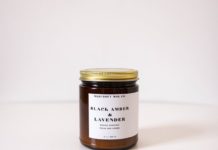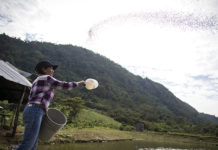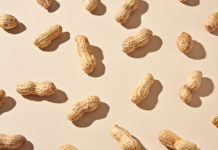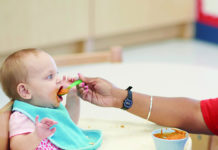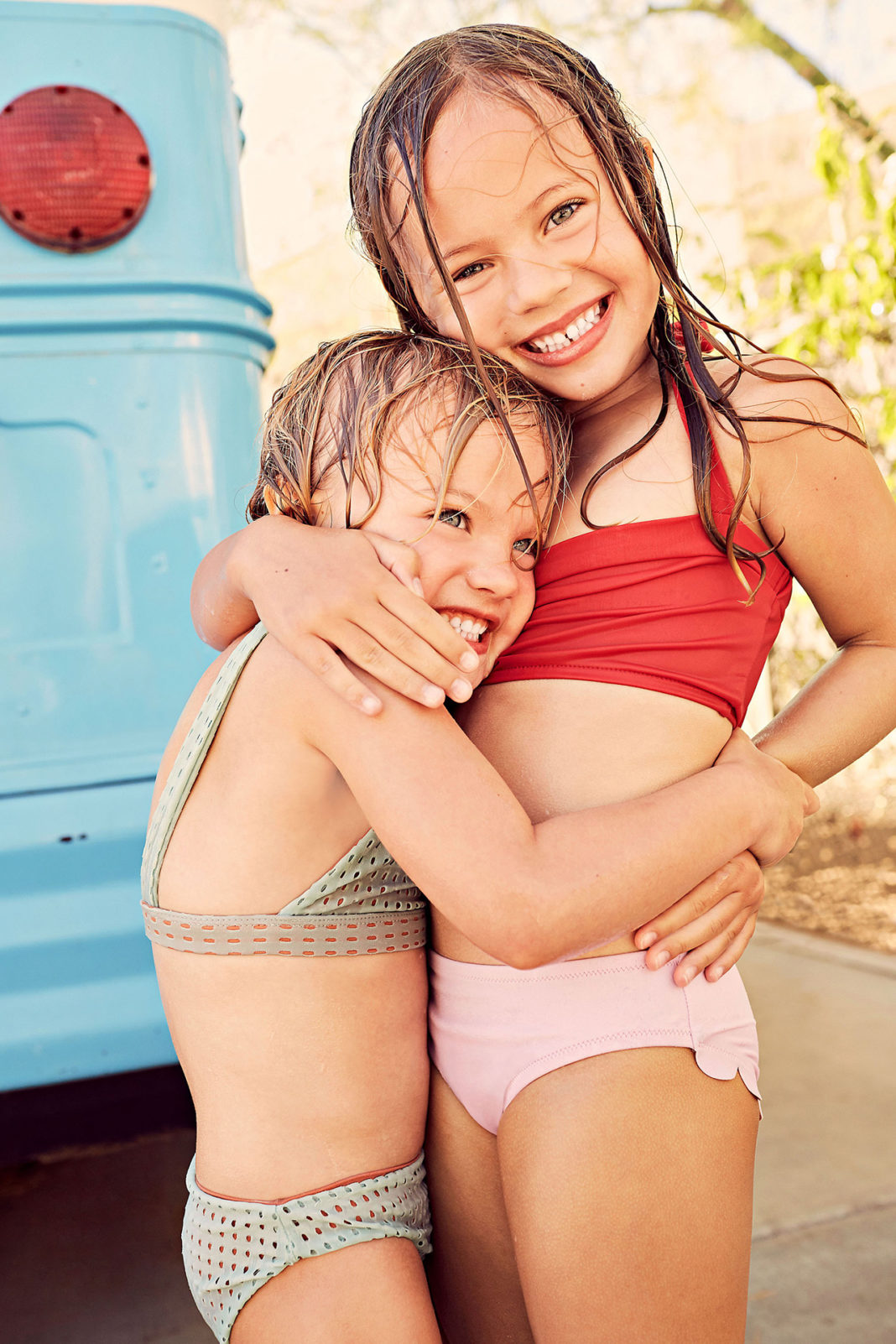Your kid's skin is likely smooth, soft, and oh-so-kissable—not saying that yours isn't—but what makes make their skin so delicious also makes it sensitive. Children's skin is thinner than adults' and more fragile, so bacteria, allergens, and irritants can more easily penetrate the protective barrier and cause rashes or infections. It also loses moisture faster and is more vulnerable to sun damage.
All of that means keeping your child's skin clean, hydrated, and problem-free isn't always simple. We asked pediatric dermatologists what they wish every parent knew about children's skin, from general care to diagnosable issues.

1. Steer Clear of Products With Fragrances, Dyes, and Preservatives.
Kids' skin can't handle a lot of harsh chemicals. Since their skin is thinner, they absorb more of what's in skin-care products than we do. Dermatologists recommend a "less is more" approach. "You should choose products with the fewest ingredients possible to keep your child's skin happy," says Nnenna Agim, M.D., director of dermatology at Children's Health and associate professor of dermatology at UT Southwestern, in Dallas.
Although you should look for ones that are free of dyes, preservatives, and fragrances, know this: A bottle that says "unscented" doesn't necessarily mean fragrance-free. Some unscented products have what's called a masking fragrance, which is meant to hide the chemical scent of the substance, explains Patrick McMahon, M.D., a pediatric dermatologist and medical director of teledermatology at Children's Hospital of Philadelphia. "Masking fragrances could still be irritating for some children, so always look for 'fragrance-free' on the packaging." Even with "natural" products, you want as close to one ingredient as possible. Dr. McMahon often recommends 100 percent pure coconut oil, pure shea butter, and good old-fashioned petroleum jelly.
2. Keeping Wounds Moist Can Minimize Scars.
If your child gets a cut, a scrape, or another minor skin injury, first clean the area with soap and water to remove any debris and prevent an infection. Then apply an ointment on top, such as petroleum jelly, to make sure it doesn't dry out. "If you don't apply ointment, a scab may form, which can slow the healing process," says Derek Chu, M.D., a pediatric dermatologist at Stanford Children's Health, inPalo Alto, California.
Skip antibiotic ointment, though. Some kids may be (or can become) allergic to certain topical antibiotics, which can cause a rash. So keep it easy for yourself and bring out the tube of antibiotic ointment only if your kid's wound looks infected (redness, pus, bumps). Healing skin is often darker or lighter than its normal shade, so "once the cut has healed, protect it from the sun with clothing or sunscreen to help prevent long-term pigment change," says Adnan Mir, M.D., Ph.D., a pediatric dermatologist and a committee chair of The Society for Pediatric Dermatology.
3. Go Heavy on the Diaper-rash Cream—as if You’re Frosting a Cake.
The first line of defense is to change your baby's diaper often, and as soon as you can after it's soiled. When possible (especially if your baby already has diaper rash), gently clean the area without soap or excessive rubbing. "You can use a little squeeze bottle of warm water to rinse the area and then blot it dry," says Susan Boiko, M.D., a pediatric dermatologist at Rady Children's Hospital, in San Diego. Then apply a diaper paste or an ointment to create a barrier so pee or poop touches the cream instead of your baby's skin. "Spread on a thick layer as if you're putting cream cheese on a bagel," Dr. Boiko notes. You can also stave off a red tush by allowing the skin to fully dry between diaper changes, says Brandi Kenner-Bell, M.D., assistant professor of dermatology and pediatrics at Ann & Robert H. Lurie Children's Hospital of Chicago. Whenever feasible, let your kid have some naked time so they can air out.
Sometimes, even when you do all of this, your kiddo still gets a diaper rash. If the rash gets worse, doesn't go away within two to three days, or spreads to other parts of the body, or if your baby has a fever, contact their doctor.
4. Plain Water Can Work Just as Well as Soap.
"Babies and young children don't have the hormones, the sweating, or the oils in their skin to cause odor, so there's no need to put soap all over their body," Dr. Kenner-Bell explains. A good soapy scrub down is needed only if their skin is visibly soiled, they went swimming, or you've applied insect repellent or sunscreen. "Otherwise, use a mild soap or a gentle cleanser just on the 'stink zones'—that's the armpits, groin area, and feet—and plain water for all the other parts," says A. Yasmine Kirkorian, M.D.,a pediatric dermatologist and interim chief of dermatology at Children's National Hospital, in Washington, D.C. A daily bath is fine—it won't dry out your kid's skin. Just go easy on the suds and shampoo.
Cutting back on soap applies to your child's face too. Usually, plain warm water is enough. But you may need a gentle cleanser or a baby wipe to remove the remnants of greasy or oily foods.
5. If Your Kid Has Eczema, a Quick Bath Can Seal in Moisture.
Eczema, or atopic dermatitis, is the most common reason parents take kids to a dermatologist. It causes patches of dry, itchy skin, and for decades, doctors recommended that people with the condition bathe less frequently to avoid dehydrating their skin. "Now we suggest taking short daily baths because we've learned that this helps keep moisture in," Dr. Kenner-Bell says. A five-to-ten-minute soak once a day is all your kid needs. Afterward, just pat them dry, apply any topical eczema medication, and immediately slather on moisturizer to seal in the hydration. "This provides an added barrier not only to help retain moisture in the skin but also to protect it from irritating substances that it might come in contact with," says Dr. Chu, who recommends using thicker creams or ointments rather than lotion and moisturizing at least twice a day for kids with dry or eczema-prone skin.
If daily baths and moisturizing don't improve your child's eczema symptoms, check with their pediatrician or dermatologist for other treatments.
6. Use About a Tablespoon of Moisturizer on Each Area of Your Kid’s Body.
Even if your child doesn't have eczema, regular moisturizing helps improve and maintain the health of their skin. But you're probably being too light-handed. "When I show parents how much moisturizer they should use on their child's skin, it's often way more than they think," Dr. Kirkorian says. "Your child's skin should be bright, glistening, and shiny when you're done." It might look as if you've overdone it, but just wait—the moisturizer will get absorbed in about five minutes. A once-a-day rubdown after a bath is all a kid without eczema needs to lock in moisture and keep their skin healthy.
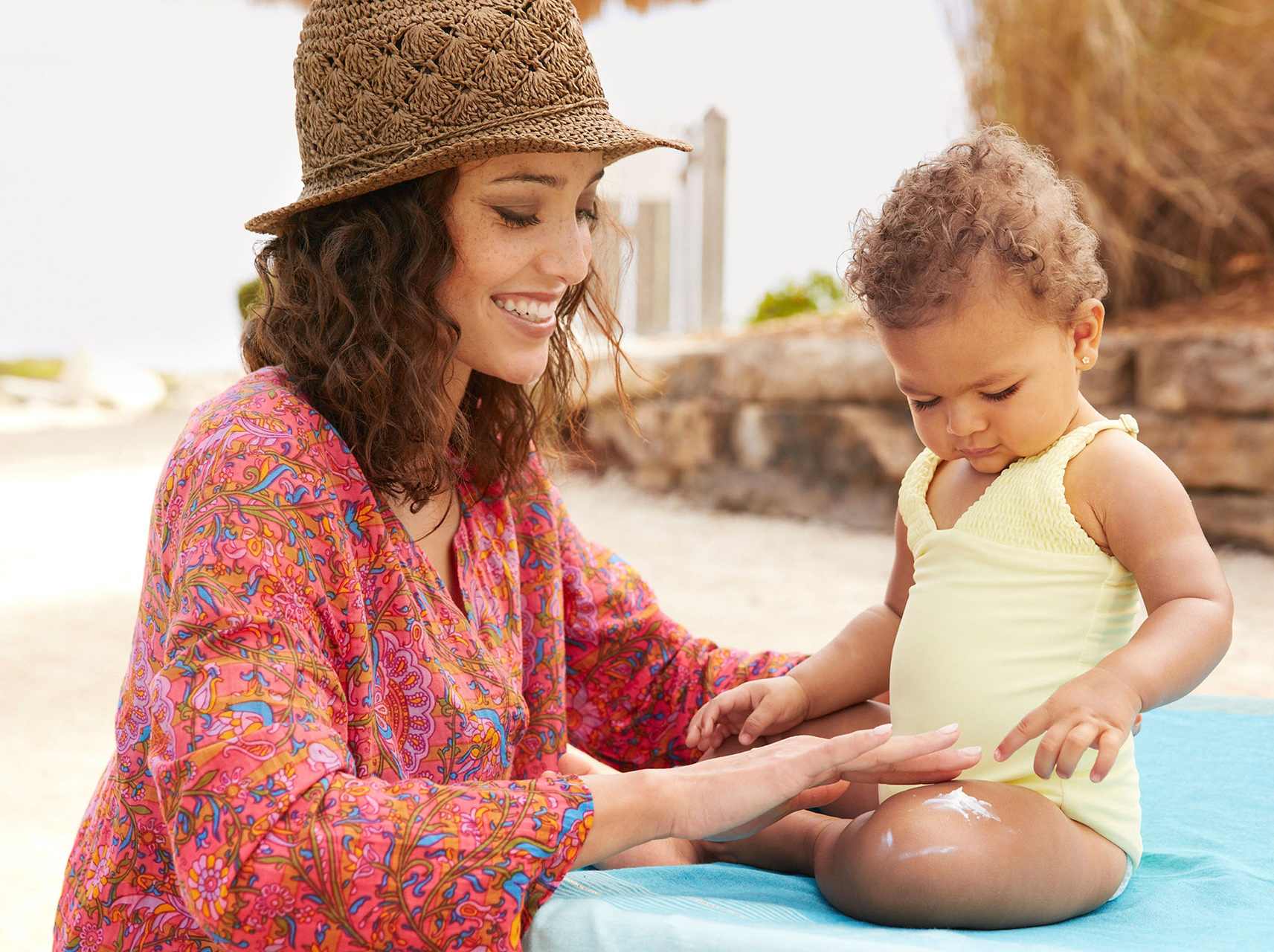
7. A Sunburn Now Can Increase Their Risk of Skin Cancer Later.
"The damage done by the sun in the first 18 years of life sets the stage for your child's skin-cancer risk when they get older," Dr. Mir explains. Blistering sunburns, in particular, are dangerous in the long term. The best way to protect your child is to limit sun exposure, especially during the peak-intensity hours of 10 a.m. to 4 p.m. When they're outdoors, have them wear clothing with UPF (ultraviolet protection factor), or dress them in lightweight long sleeves and long pants, tightly woven fabrics, dark colors, a wide-brimmed hat, and sunglasses with UV protection.
For babies under 6 months, the best protection is to keep them covered up and out of the sun, but if there's no way to avoid it, apply a small amount of broad-spectrum sunscreen with at least SPF 30 to exposed areas of their skin, like their face and the backs of their hands. Children 6 months and older, though, should wear sunscreen anytime they'll be outdoors (even on cloudy days since the sun's rays still shine through). That goes for all kids, regardless of skin tone. "Some Black and brown people think they don't need sunscreen, but that's far from true, "Dr. Kenner-Bell says. "Yes, skin-cancer rates are lower in these populations, but we're subject to sun damage just like anyone else."
Mineral-based sunscreens that contain zinc oxide or titanium dioxide are safest for children. Look for one that is broad-spectrum (this means it protects against both UVA and UVB rays) and has an SPF of 30 or higher. Apply sunscreen 15 to 30 minutes before going outside, and reapply every two hours and after your child has been swimming or sweating. Then make sure to spot-check. We often miss the hairline, scalp, ears, backs of the knees, tops of the feet, and that little area on the back where your child's shirt rises if they're bending over to play, Dr. Boiko says. For squirmy or impatient kids, make applying sunscreen a game by letting them pick the area on their body you slather up first.
8. Most Rashes Are Not Dangerous.
Although a red or bumpy area on your kid's skin might freak you out, there are many common rashes that are caused by irritation or a reaction to a virus. "Most rashes aren't an emergency and will likely go away on their own or with an OTC product like a moisturizer or hydrocortisone," Dr. McMahon says. "For hives, an antihistamine is most helpful." However, contact your doc about a rash that comes with a fever, has blisters or is tender, is near the eyes, mouth, or genitals, popped up after your child took a new medication, or persists for longer than a couple of days.
9. Kids With Moles Should See a Dermatologist Every Year.
Whether your child has one mole or several, they should see a dermatologist or a pediatric dermatologist at least annually for an evaluation, says Ana M. Duarte, M.D., director of dermatology at Nicklaus Children's Hospital and founder of the Children's Skin Center, in Miami. In between visits, keep an eye on your child's moles. If there's a new one or an existing one has changed in size, shape, or color, or if it just looks different from the other moles, your child should see a dermatologist as soon as possible. That goes for birthmarks too. There are many different types, so one that changes also warrants an immediate appointment with a doctor.
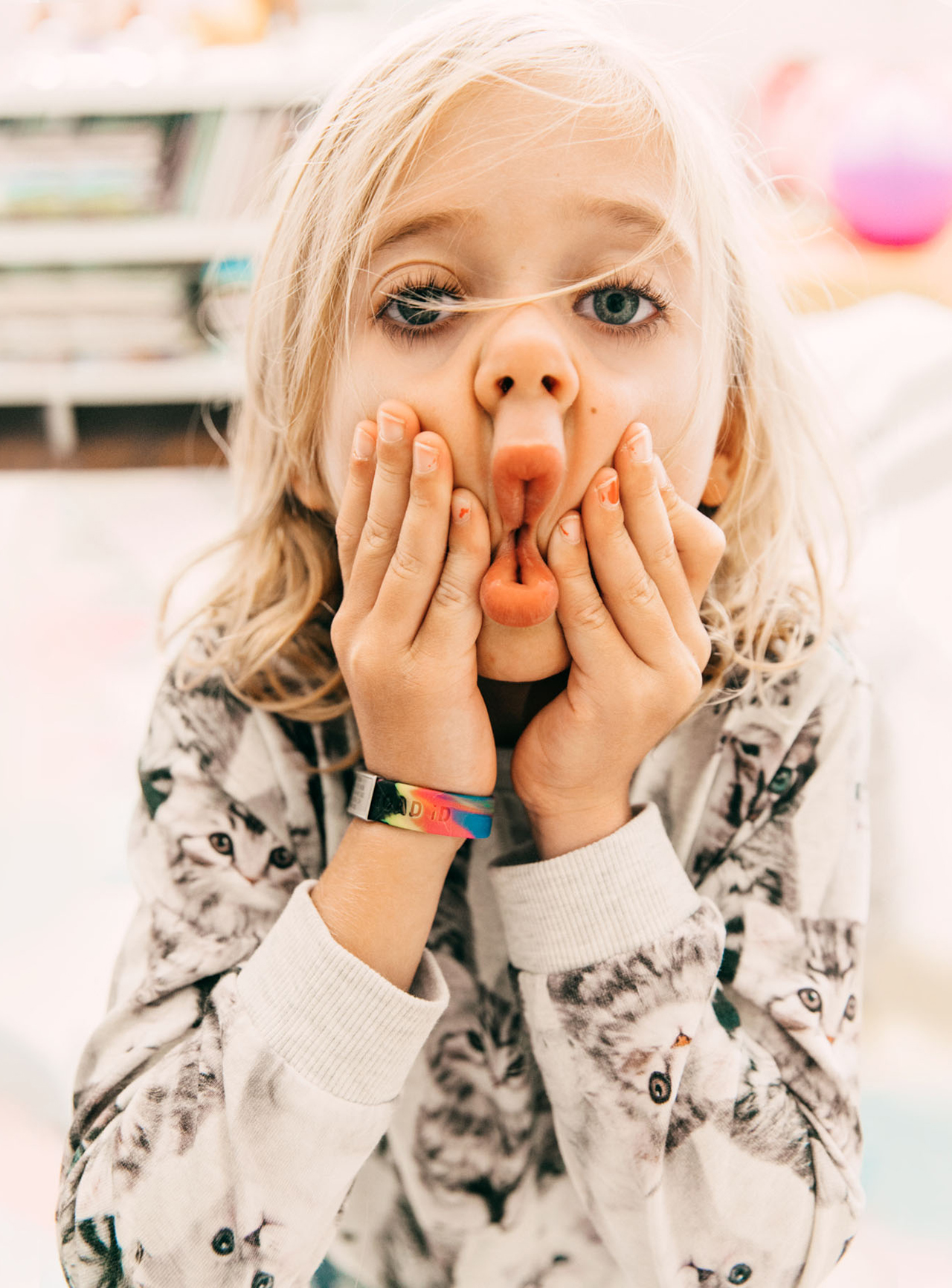
Wait—is That a Pimple?
If you've spotted a blemish on your kid—even though they're nowhere near teenage-dom—these are some potential causes.
Baby acne
This bumpy, reddish rash appears on a baby's face and neck between their second and fourth weeks of life. It's harmless and goes away on its own without treatment.
Prepuberty breakouts
Some kids start to get acne several years before puberty, as early as ages 7 to 9, Dr. Anna Kirkorian says. As long as it's just a few bumps here and there, it's probably normal and can be treated with a gentle cleanser or an OTC salicylic and benzoyl peroxide acne wash. If the acne is severe or causes scarring, consult their pediatrician or a dermatologist.
Mask irritation
Dubbed "maskne," it's caused by bacterial growth, inflammation, and friction as a result of wearing a face mask. To prevent or reduce it, wash or clean their masks frequently. If your child's skin is irritated, put a little petroleum jelly on the area at night before bedtime.
Acne look-alikes
Sometimes bumps on the face aren't really pimples. They could be from the bacterial skin infection perioral dermatitis (which causes bumps around the mouth) or some other rash, Dr. Kirkorian says. If you're unsure, contact your doctor.
This article originally appeared in Parents magazine's August 2021 issue as "9 Smart Ways to Protect Your Child's Skin." Want more from the magazine? Sign up for a monthly print subscription here
Parents magazine






